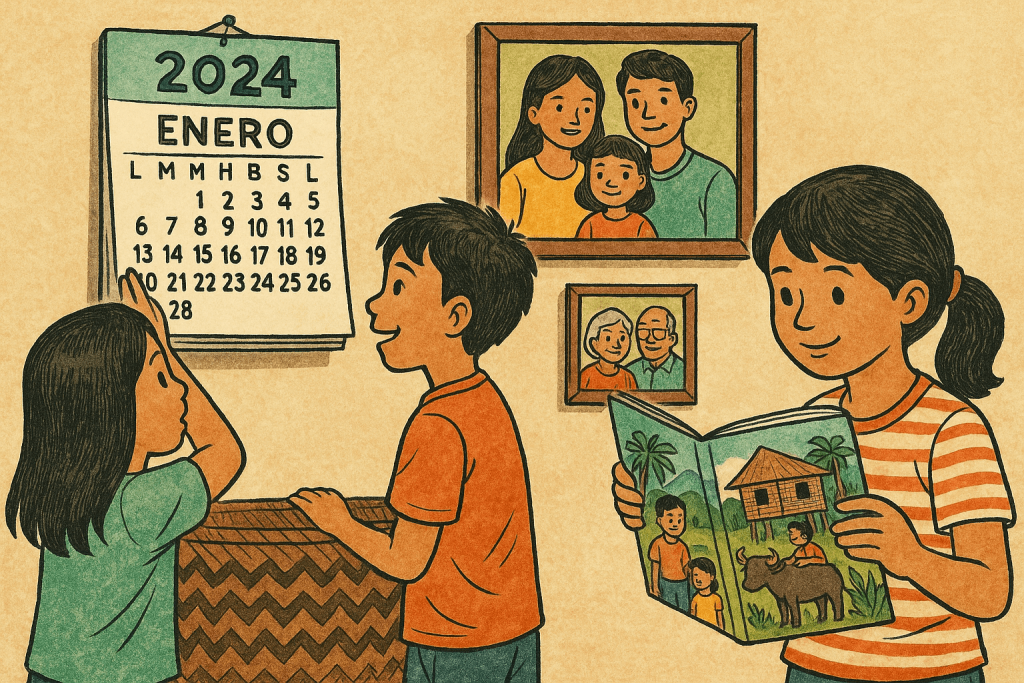Physical Address
304 North Cardinal St.
Dorchester Center, MA 02124
Physical Address
304 North Cardinal St.
Dorchester Center, MA 02124

Parents shape their children’s worldview through stories they hear and books they read. When those stories reflect the child’s culture, identity takes root early. A home library filled with children’s books about Filipino culture supports language development, emotional awareness, and national pride—all while feeding the imagination.

Children engage with stories that feel familiar. Books that feature karinderya lunches, jeepney rides, or lola’s bedtime tales spark instant recognition. These moments mirror their surroundings and show them that their everyday lives hold meaning.
Start by picking books with Filipino settings. Look for stories set in rural provinces, bustling urban barangays, or even Filipino immigrant communities abroad. Add titles that reflect local family dynamics, from extended households to the bunso-kuya sibling relationships. This selection helps kids see themselves in the pages they read.

Filipino stories offer a wide range—from magical creatures to moral lessons. A good home library balances both. Don’t limit your shelf to only folktales or slice-of-life reads. Instead, mix things up.
Include a few books about aswangs, tikbalangs, or manananggals. These characters make scary bedtime stories fun and age-appropriate, especially when written for young readers. Match those with books that explore respect, generosity, or environmental awareness. The combination makes reading entertaining and thoughtful.
One key goal: help your child understand that fantasy and reality can work together to build empathy and identity.
Language builds connection. Books written in Tagalog, Cebuano, Ilocano, or other local tongues help kids absorb vocabulary without effort. Many bilingual books make this process easier for families who speak English at home but want their kids to maintain ties with their heritage.
Don’t worry if you’re not fluent in every regional language. Even basic exposure creates curiosity. Reading aloud together—asking your child to guess or mimic words—turns the experience into a bonding activity.
Tagalog-English books also allow you to discuss words and meanings while following the story. This approach works exceptionally well for parents raising multilingual children.
Locating these books sometimes requires a little digging. Local bookstores often highlight new titles, especially during National Book Month. But many gems come from small publishers, independent authors, or online platforms focusing on homegrown literature.
Libraries remain a great resource, too. Ask your local librarian for Filipino titles in the children’s section. Some school libraries already curate reading lists for students with books centered on Philippine history and traditions.
Several websites also spotlight children’s books about Filipino culture, offering recommendations for different age groups. These online lists often feature titles that mix cultural storytelling with adventure, humor, or mystery—perfect for curious young readers.
Involve your child in the process. Let them choose a few books on their own. Ask what kinds of stories they like—funny, spooky, heartwarming. Encourage them to pick a book that features Filipino culture and offer praise when they show interest.
Children build reading habits when they feel they have a say. One small choice—a book with a Filipino superhero or a diary-style story set in Manila—might lead to a lifelong love of literature.
Rotate your collection from time to time. Keep books in reach. Make reading a shared daily habit, even for just ten minutes.
Children begin forming ideas about identity and community long before they learn complex words. What they read teaches them who they are, who they can be, and how others live.
When Filipino kids see characters with names like theirs, eat food they know, or speak a mix of English and Tagalog, they feel seen. They understand that their stories deserve space. They realize their lives matter—not just in their homes but also in books read by others.
Books also teach kids about differences. Seeing the many ways Filipinos live—in cities, abroad, tribal areas, and blended families—expands their view of the world. It builds acceptance and curiosity in equal parts.
You don’t need hundreds of books to start. A small, well-chosen stack of stories with meaning beats a large shelf of random titles. Focus on quality. Choose books that spark laughter, inspire questions, or bring back childhood memories.
As new titles appear, update your collection. Ask teachers, local authors, or fellow parents for suggestions. Support authors and publishers who prioritize Filipino voices. Make birthdays and holidays a reason to add another book to the mix.
A culturally rooted library grows with your child. It evolves from picture books to chapter books to novels with deeper themes. It remains a quiet but powerful tool in shaping who they become through every stage.
Your bookshelf doesn’t just hold paper and ink—it holds identity, memory, and pride.